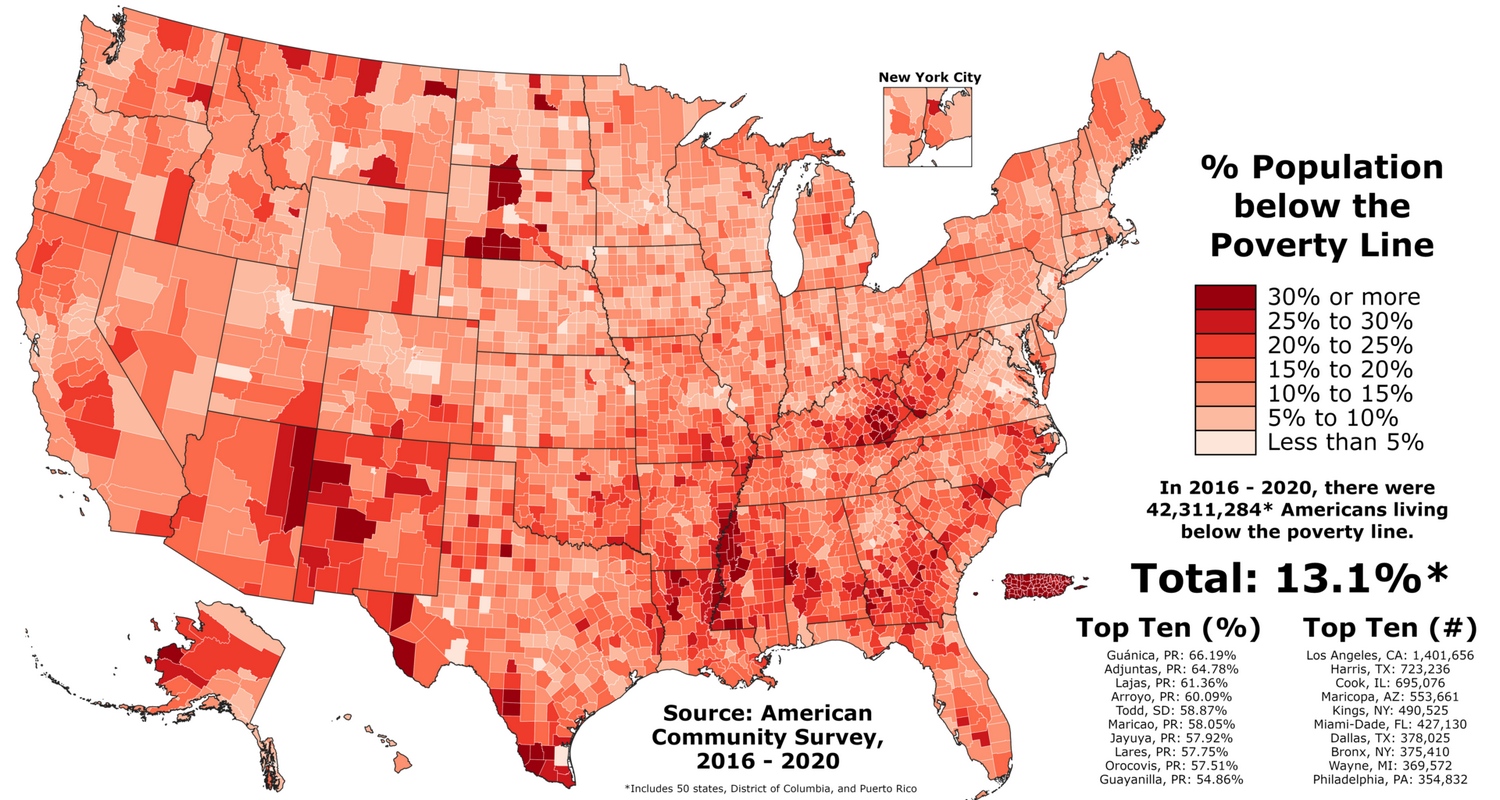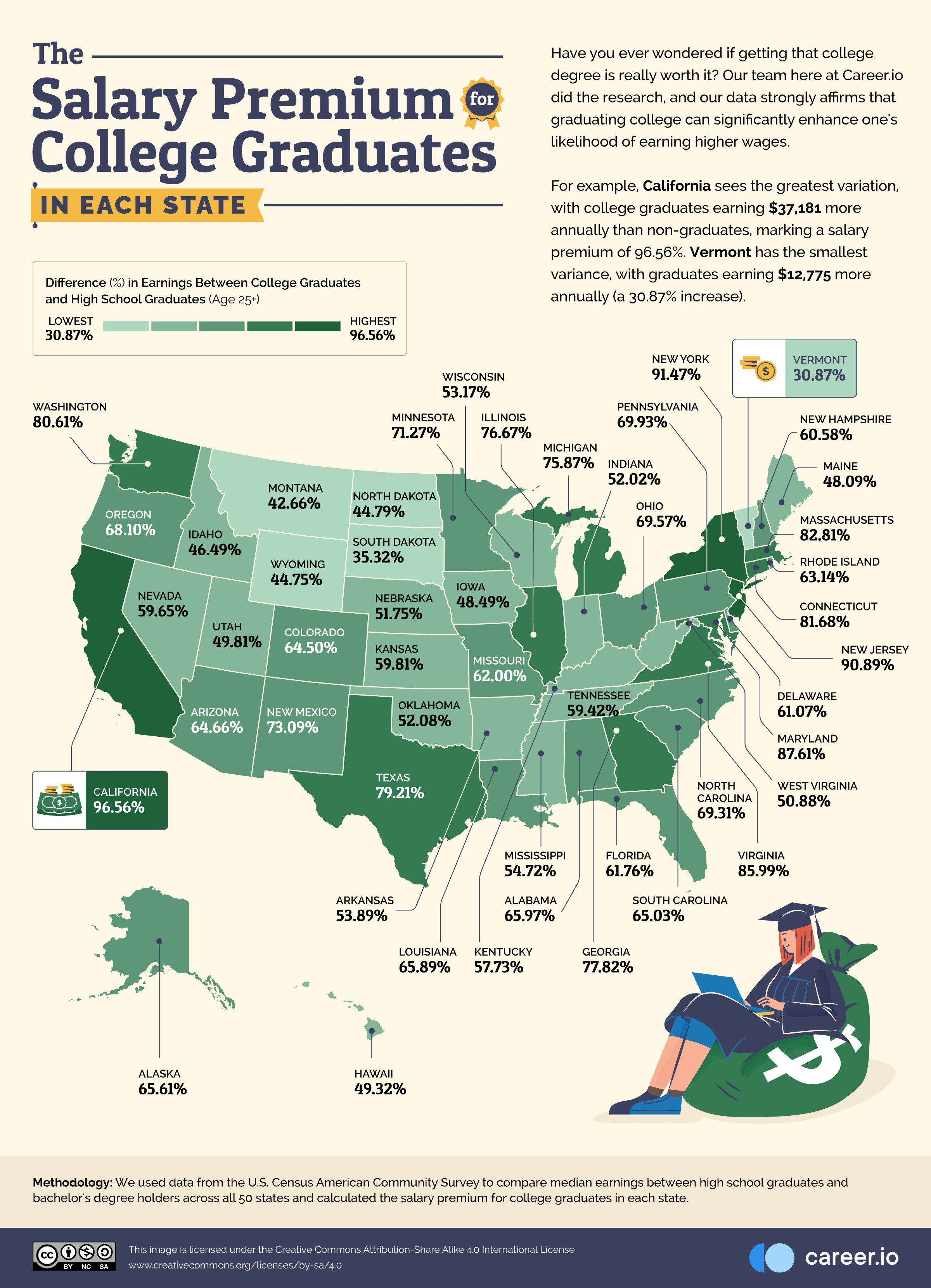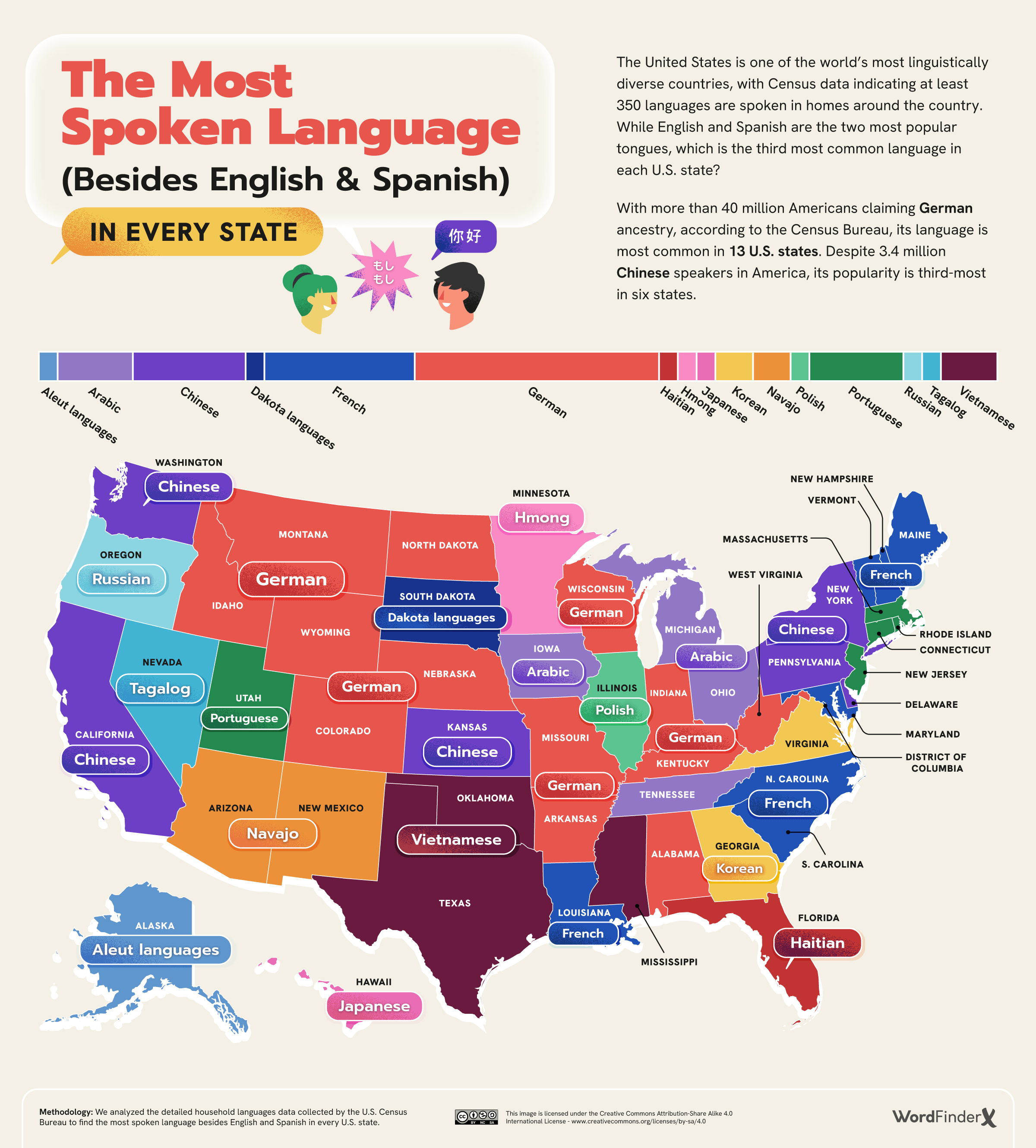Percent of population with a disability by U.S. county
According to the American Community Survey, an annual survey conducted by the US Census Bureau, the overall percentage of people with a disability in the United States civilian population slowly increased from 11.9 percent in 2010 to 12.8 percent in 2016.

Quick Facts
• The American Community Survey (ACS) estimates the overall rate of people with disabilities in the US population in 2016 was 12.8%.
• The percent of people with disabilities varies greatly by state, as do levels of people with disabilities in employment, poverty, earnings, and health behaviors.
• The percentage of those with a disability in the US civilian population slowly increased from 11.9% in 2010 to 12.8% in 2016.
• In 2016, the state with the lowest percentage of its population having a disability was Utah (9.9%). The state with the highest percentage of disability, West Virginia, was more than twice as high with a percentage of 20.1%.
• As the US population ages, the percentage of people with disabilities increases. In the US in 2016, less than 1.0% of the under 5 years old population had a disability. For those ages 5-17, the rate was 5.6%. For ages 18-64, the rate was 10.6%. For people ages 65 and older, 35.2% had a disability.
• In 2016, of the US population with disabilities, over half (51.0%) were people in the workings of 18- 64, while 41.4% were 65 and older. Disability in children and youth accounted for only 7.3% (ages 5-17) and 0.4% (under 5 years old).
• From 2008 to 2016, the percentages of people with each type of disability have remained relatively unchanged. The percentage of people with ambulatory disabilities, cognitive disabilities, and independent living disabilities rose by 0.2 to 0.3 points over the period, while people with hearing, vision, and self-care disabilities rose 0.1 points or less.
• In the US in 2016, 35.9% of people with disabilities ages 18-64 living in the community were employed. The employment percentage was more than double for people without disabilities, 76.6%.
• The employment gap, the difference between the employment percentage for people with disabilities (35.9%) and people without disabilities (76.6%), was 40.7 percentage points.
• For people with disabilities, employment rates ranged from a high of 54.0% (North Dakota) to a low of 27.4% (West Virginia). For those without disabilities, the employment ranged from 70.8% (West Virginia) to 84.2% (North Dakota).
• In thirty-four states, the employment percentage gap between those with a disability and those without was 40 percentage points or greater; only three states showed an employment percentage gap less than 23 percentage points.
• Employment rates vary by type of disability. Employment percentages were highest for people with hearing disabilities (51.7%) and vision disabilities (43.5%) and lowest for independent living (17.0%) and self-care (15.5%) disabilities.
• In 2016, the median earnings of people with disabilities ages 16 and over in the US was $22,047, about two-thirds of the median earnings of people without disabilities, $32,479.
• An earnings disparity of over $10,000 in median earnings between those with and without disabilities continues a trend, which has existed since at least 2008 and has increased in magnitude since 2013.
• States varied widely in earnings gap (the difference between the median earnings for those with and without disabilities) – from a low of $5,242 in Idaho to a high of $23,144 in the District of Columbia.
• The poverty percentage gap, or the difference between the percentages of those with and without disabilities, has been between 7.4 and 8.3 percentage points over the past 8 years.
• Over the past 8 years, the highest percentage of people with disabilities who smoke was 27.0% in 2009. This has been an annual decline since 2012 (from 26.0% to 23.4%). But in 2016, the percentage moved back up to 24.6%. Over the same period, the highest percentage of people without disabilities smoking was 18.2% in 2011 and it has been in annual decline thereafter to 13.6% in 2016. The gap between the percentages for smokers with and without disabilities rose in 2016 to 11 percentage points.
• In 2016, 38.9% of people ages 18 and over with disabilities were obese. In comparison, only 26.4% of those without disabilities were obese.
• At 12.6 percentage points, 2016 had the lowest obesity gap (the difference in the percentages of obesity for people with and without disabilities) since 2009. It was also the second straight year-to-year drop.
• For states, gaps in binge drinking for those ages 18 and over ranged from 11.7 points less (thus more people without disabilities binge drinking than those with disabilities) in District of Columbia to 1.6 points less in Utah.
Data: disabilitycompendium.org








